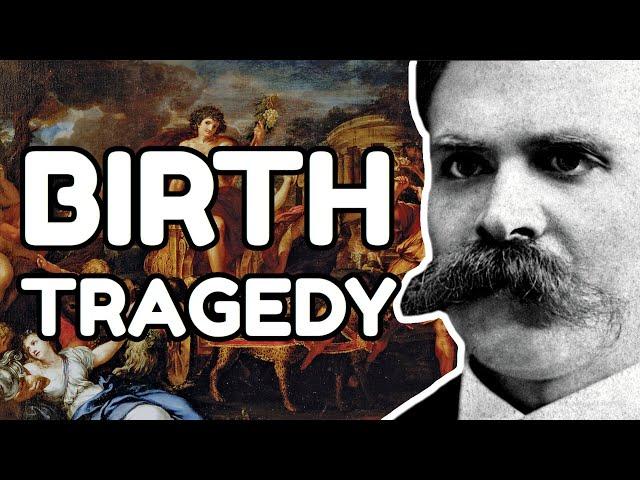
How Art Can Save You | Nietzsche's The Birth of Tragedy
Support us on Patreon, get access to exclusive videos:
▶ https://www.patreon.com/WeltgeistYT
WATCH:
▶ Why Nietzsche Hated Socrates: https://youtu.be/DM78nStythg
OUR ANALYSES:
▶ Beyond Good and Evil: https://youtu.be/WIHXZUltfqk
▶ The Antichrist: https://youtu.be/qej1Z8Qzq_c
▶ Genealogy of Morals: https://youtu.be/6PUx4cOfFcI
▶ Twilight of the Idols: https://youtu.be/YpVr_NEvWYA
▶ The Will to Power: https://youtu.be/He6ZC7ZFBt8
▶ Daybreak: https://youtu.be/cOL2z7nuXdA
▶ The Joyful Science: https://youtu.be/U0fTBOJ-C_I
TIMESTAMPS:
00:00 Introduction
02:28 Apollo and Dionysus
08:41 The Chorus
16:27 A glimpse of horror
21:02 A spoonful of sugar
24:05 The death of tragedy
26:05 Euripides
34:14 Socrates
41:03 Richard Wagner
49:03 Beyond the Birth of Tragedy
55:02 Conclusion
The Birth of Tragedy is Nietzsche’s first major work. It immediately split public opinion in half: hated by the academic world, embraced by the artistic world.
Heavily drawing on the influence of Arthur Schopenhauer, it features the twin concepts of the Apollonian and Dionysian as creative drives in the human spirit. Apollonian art representing individuality, restraint, delineation; plastic arts, as opposed to the Dionysian; exuberant, formless, ecstasy, emotion; musical arts.
Both of these creative forces reach an equilibrium in Greek tragedy. This work deals with how Greek tragedy came to be (borne from the Greek chorus), how tragedy died (featuring also one of Nietzsche’s earliest critiques of Socrates) and how tragedy can be reborn (through the Gesamtkunstwerk of Richard Wagner.)
Although this work put Nietzsche on the map, he would later disavow much of its ideas while saving others. In particular, he would become disillusioned with Wagner’s art and turn against his former idol Schopenhauer. The metaphysics underpinning the entire work would also be discarded.
He revisioned his ideas on the nature of (Greek) pessimism and the role of art in a culture. Republished fourteen years after the original with a new foreword which includes a self-criticism, the work attained a unique place in Nietzsche’s larger body of work and philosophy.
Still, the Birth of Tragedy stands as an influential work, if not in philosophy, definitely in art history and aesthetics.
▶ https://www.patreon.com/WeltgeistYT
WATCH:
▶ Why Nietzsche Hated Socrates: https://youtu.be/DM78nStythg
OUR ANALYSES:
▶ Beyond Good and Evil: https://youtu.be/WIHXZUltfqk
▶ The Antichrist: https://youtu.be/qej1Z8Qzq_c
▶ Genealogy of Morals: https://youtu.be/6PUx4cOfFcI
▶ Twilight of the Idols: https://youtu.be/YpVr_NEvWYA
▶ The Will to Power: https://youtu.be/He6ZC7ZFBt8
▶ Daybreak: https://youtu.be/cOL2z7nuXdA
▶ The Joyful Science: https://youtu.be/U0fTBOJ-C_I
TIMESTAMPS:
00:00 Introduction
02:28 Apollo and Dionysus
08:41 The Chorus
16:27 A glimpse of horror
21:02 A spoonful of sugar
24:05 The death of tragedy
26:05 Euripides
34:14 Socrates
41:03 Richard Wagner
49:03 Beyond the Birth of Tragedy
55:02 Conclusion
The Birth of Tragedy is Nietzsche’s first major work. It immediately split public opinion in half: hated by the academic world, embraced by the artistic world.
Heavily drawing on the influence of Arthur Schopenhauer, it features the twin concepts of the Apollonian and Dionysian as creative drives in the human spirit. Apollonian art representing individuality, restraint, delineation; plastic arts, as opposed to the Dionysian; exuberant, formless, ecstasy, emotion; musical arts.
Both of these creative forces reach an equilibrium in Greek tragedy. This work deals with how Greek tragedy came to be (borne from the Greek chorus), how tragedy died (featuring also one of Nietzsche’s earliest critiques of Socrates) and how tragedy can be reborn (through the Gesamtkunstwerk of Richard Wagner.)
Although this work put Nietzsche on the map, he would later disavow much of its ideas while saving others. In particular, he would become disillusioned with Wagner’s art and turn against his former idol Schopenhauer. The metaphysics underpinning the entire work would also be discarded.
He revisioned his ideas on the nature of (Greek) pessimism and the role of art in a culture. Republished fourteen years after the original with a new foreword which includes a self-criticism, the work attained a unique place in Nietzsche’s larger body of work and philosophy.
Still, the Birth of Tragedy stands as an influential work, if not in philosophy, definitely in art history and aesthetics.
Комментарии:
Muhabbat afsonasi 28-qism
daramalar olami
AMONG US but red is always SUS
Nutshell Animations
TOP 5 fireworks batteries from Aldi
Pyro Phoenix
Русский язык 6 класс 1 часть с.33 упр.69 Авторы: Ладыженская и Баранов.
Учись по - взрослому!


























